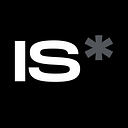Breaking Beauty Stereotypes: Challenging Conventional Marketing Narratives
Hey there, beauty enthusiasts! Today, we embark on an exciting journey to challenge the stereotypes that have dominated the beauty industry for too long.
Get ready to dive into a world where diversity, authenticity, and inclusivity reign supreme. In this article, we’ll explore how embracing uniqueness can revolutionize beauty marketing and celebrate individuality.
Let’s shatter those traditional beauty norms and pave the way for a more empowering and inclusive future!
Embracing Diversity — Beyond the ‘Ideal’ Beauty Standards
Let’s kick things off by breaking free from the outdated notion of a single “ideal” beauty standard. Beauty comes in all shapes, sizes, colors, and forms. Here’s how you can celebrate diversity in your marketing campaigns:
1. Representing All Skin Tones:
Include models with various skin tones in your makeup ads and product promotions.
Brands like Fenty Beauty and Nubian Skin have already taken the lead, showcasing the beauty of every complexion.
2. Age-Positive Marketing:
Challenge age-related stereotypes and showcase beauty in every stage of life.
Think of campaigns featuring models of different ages, like CoverGirl’s decision to feature Maye Musk as their ambassador.
Authenticity Over Perfection — Embracing Real Beauty
Beauty isn’t about flawless perfection; it’s about embracing our imperfections and uniqueness. Let’s shift our focus to authentic beauty:
1. Natural Beauty Campaigns:
Promote natural beauty with minimal retouching and let real beauty shine through.
Companies like Dove’s “Real Beauty” campaigns have led the way in championing authenticity.
2. Celebrating Individuality:
Encourage customers to embrace their individuality by showcasing diverse makeup looks and styles.
Show them that beauty is a canvas to express themselves, not conform to rigid norms.
Inclusivity at its Core — Expanding Product Offerings
It’s time to make beauty accessible to all. Here’s how you can foster inclusivity:
1. Expanding Shade Ranges:
Offer diverse shade ranges for makeup products like foundations, concealers, and lipsticks.
Fenty Beauty’s groundbreaking 40-shade foundation range set a powerful example.
2. Adapting to Different Needs:
Cater to various skin types and concerns with targeted products, such as skincare lines for sensitive skin or vegan-friendly options.
The Power of Storytelling — Rethinking Beauty Narratives
Now, let’s dive into storytelling techniques that challenge conventional beauty narratives:
1. User-Generated Content (UGC):
Encourage customers to share their unique beauty stories through UGC campaigns.
Lush’s #LushShowcase initiative allows customers to share their experiences with Lush products.
2. Empowering Campaign Messages:
Craft empowering campaign messages that go beyond surface-level beauty and inspire confidence and self-expression.
Augmented Reality (AR) — Virtual Beauty Revolution
Embrace AR technology to revolutionize the beauty industry:
1. Virtual Try-Ons:
Integrate AR try-on features in your beauty apps or websites, allowing customers to virtually test makeup products before purchasing.
2. Personalized Beauty Recommendations:
Use AR to offer personalized beauty recommendations based on customers’ unique features and preferences.
Conclusion:
As we conclude our journey of breaking beauty stereotypes, remember that inclusivity, authenticity, and diversity are not just buzzwords but the guiding principles for a brighter future in the beauty industry.
By challenging conventional marketing narratives and embracing the power of AR technology, we can create a beauty landscape that celebrates individuality and empowers everyone to feel beautiful, confident, and accepted.
So, let’s join hands to shatter those norms and usher in a new era of beauty where uniqueness reigns supreme!
